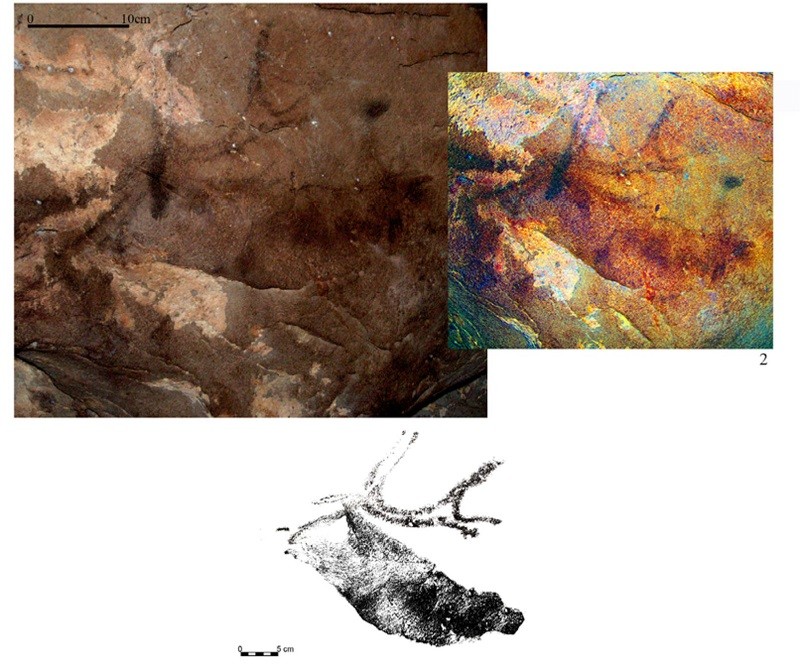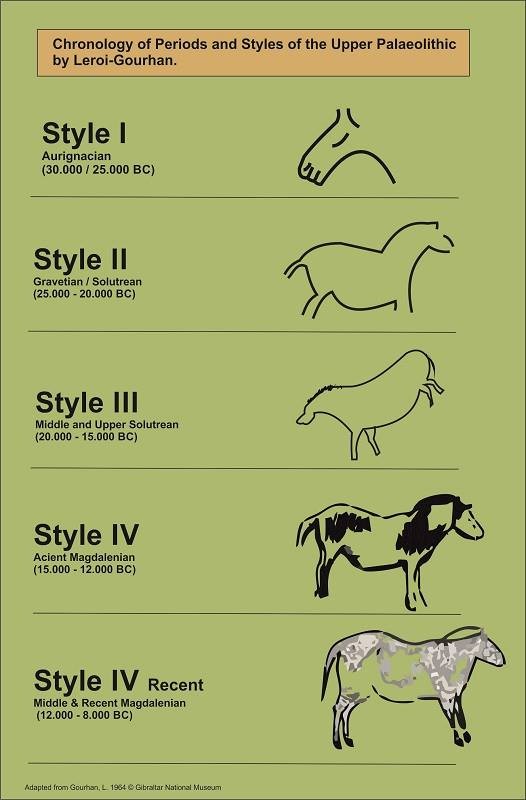Painted Deer from Gorham’s Cave

The deer from Gorham's Cave painted in black, next to digital enhancements.

Summary of Leroi-Gourhan's method for dating cave art.
Painted Deer from Gorham’s Cave
The most common motifs in Palaeolithic art are dominated by zoomorphic representations of herbivores. Deer, horses and bison are frequently depicted, either alone or in large groups. Bison are absent from the fauna in the south of the Iberian Peninsula, so this animal is not represented in our local cave art, with the horse and deer being the most common.
Today we want to show you a deer from Gorham’s Cave, which is painted in black and stands out for its high level of naturalism. The detailed outline of the antlers as well as the shading made by the artist by blurring the black pigment in the animal’s neck make the figure very realistic.
For methodological reasons, this deer could not be dated directly through the use of the usual analytical techniques such as Carbon-14. However, it has been attributed to the Solutrean period (c. 20,000 years ago), based on the style of its strokes being like those found on other cave paintings of the period. A Solutrean occupational level is also well documented in the cave.
Since the early days of the study of cave art, prehistorians have tried to attribute the different styles to particular Palaeolithic periods. Great scholars in the field, such as Henri Breuil or André Leroi-Gourhan, established guidelines for recognising and dating these representations chronologically in a series of the different styles observed in Palaeolithic cave art.
Leroi-Gourhan applied a method for dating cave art which was very prominent in the second half of the 20th century. He studied the art on bone and plaques from excavations which could be dated by the positions in the levels in which they were found, and compared it with the art on the cave walls. Using these similarities, and by also applying the concept from the field of History of Art, where art is said to develop from less realistic to more naturalistic styles, he attempted to date the cave art. However, following the discovery of cave paintings (such as those from Chauvet Cave in France dating from 30,000 years ago) which was shown to be much earlier than his method would predict, this method is now considered to be outdated. Having said that, it is still a useful method to apply when direct dating is not possible, since it has been shown that the different cultures of the Palaeolithic had their own style when creating cave art, although care must be taken to interpret regional variations.
Published: April 23, 2020
Other similar VM - Cave Art
18-20 Bomb House Lane
PO Box 939,
Gibraltar
